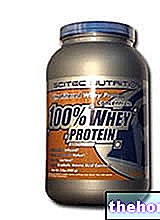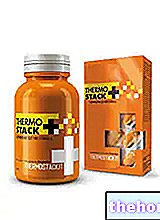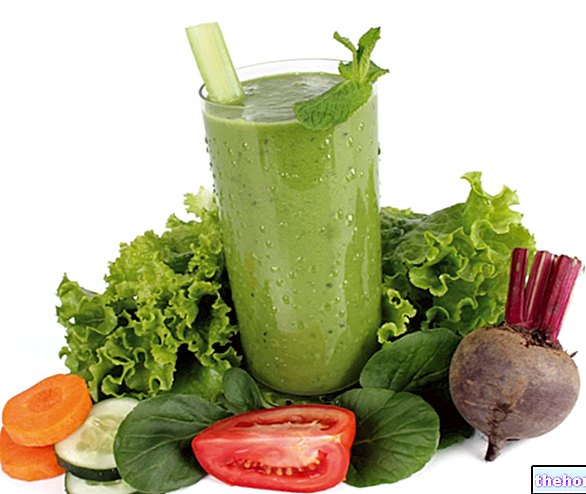Polyphenols constitute a heterogeneous group of natural substances, particularly known for their positive action on human health (not surprisingly, they are sometimes referred to as vitamin P). In nature, polyphenols are produced by the secondary metabolism of plants, where in relation to the chemical diversity that characterizes them they play different roles: defense from herbivorous animals (they impart unpleasant taste) and from pathogens (phytoalexins), mechanical support (lignins) and barrier against microbial invasion, attraction for pollinators and for the dispersion of the fruit (anthocyanins), growth inhibitors of competing plants.

SIMPLE PHENOLS: phenolic acids, coumarins and benzoic acids belong to it. Their condensation can give rise to polymers such as lignin; they are widely distributed in foods and beverages (such as the caffeic acid in coffee).
TANNINS: two categories belong to the group of tannins: condensed tannins and hydrolysable tannins. The former are also called proanthocyanidins, since by hydrolysis with strong acids they give anthocyanidins. The latter are heterogeneous polymers containing phenolic acids (eg. Gallic acid) and simple sugars.
FLAVONOIDS: flavonoids constitute the largest group of natural phenols and all have 2 phenyl-benzopyrone or flavonone as their reference structure. Structural variations in the rings allow the flavonoids to be divided into different families: flavonols, flavones, isoflavones, anthocyanins and others.
Diet, health and polyphenols
The intake of polyphenols in the human diet varies enormously in relation to the type, quantity and quality of the vegetables consumed. In any case, the intake is generally considerable, in the order of the gram / day, precisely because we are talking about molecules. most represented antioxidants in the plant kingdom. Polyphenols abound above all in fresh fruit and vegetables, but also in tea, wine, cocoa and derivatives. On the other hand, cooking considerably reduces the polyphenolic content of food, so it is important to consume fresh food or to rely on boiling (even better still steam cooking), avoiding high temperatures.
General actions of polyphenols
In nature we find many types of polyphenols, characterized by a marked structural and functional variability. In general, however, the activity of polyphenols can be summarized in the following points:
ANTIOXIDANT: protect cells from damage caused by free radicals, which develop with normal cellular metabolism and due to stressful events, such as radiation, smoke, pollutants, UV rays, emotional and physical stress, chemical additives, viral and bacterial attacks, etc. .
ANTICANCEROGENIC: in general they show an impact on the initiation step of cancer development, protecting cells against direct attack by carcinogens or altering their activation mechanism (in vitro). This scientific evidence explains the classic epidemiological evidence according to which there is a correlation between the consumption of fresh vegetables and reduced incidence of some types of cancer (skin, lung, stomach, esophagus, duodenum, pancreas, liver, breast and colon).
ANTIATEROGEN: it is widely reported that the oxidation of lipids and in particular of LDL is the cause of the development of arteriosclerosis and related diseases (stroke, thrombosis and cardiovascular diseases in general, the leading cause of death in Western countries). The main mechanism is the reduction of clotting of platelets and LDL; other mechanisms are the inhibition of lipoprotein oxidation, the radical scavenger action and the modulation of eicosanoid metabolism.
Concrete examples
QUERCETIN: polyphenol predominant in onions, but present in good quantities also in other vegetables; inhibits platelet aggregation in vitro and reduces thromboxane synthesis (antithrombotic action). Possible antitumor activity.
RESVERATROL: important polyphenol present in red wine, grape skin and other vegetables, including peanuts; inhibits LDL oxidation and platelet aggregation, protecting the body from cardiovascular diseases (antithrombotic, anti-inflammatory, antiaterogenic and vasorelaxant action ). Possible antitumor, estrogen-like and antiviral action.
ISOFLAVONES: polyphenols characteristic of soy and other vegetables, such as red clover. They modulate the metabolism of estrogens in the body acting, depending on the case, as anti-estrogenic substances; they also seem to prevent some forms of cancer, such as breast and prostate cancer.
CATECHINS: tea polyphenols with a powerful antioxidant action.
FOODS PARTICULARLY RICH IN POLYPHENOLS: tea (in particular black and green), cocoa and dark chocolate, berries, citrus fruits, cherries, pollen, cold-pressed olive oil, garlic, onion, radicchio, cabbage, broccoli and tomato . The main benefit for human health deriving from the ingestion of these foods seems to be an expression of the wide and varied presence of phytonutrients; this also explains why the protective role of food supplements that promise to meet the same expectations by providing one or a few phytochemicals at high dosages is controversial.
Finally, it should be noted that the concentration of polyphenols and phytonutrients in the same food varies in general - often to a considerable extent - in relation to the cultivation techniques, the degree of ripeness and the time elapsed between harvesting and consumption; it is known, for example, that resveratrol is produced by plants in response to exogenous, in particular fungal infections and UV rays.
To fill up on polyphenols, remember to ...
Diversify the vegetables in the diet, consuming a wide variety of fresh foods every day, therefore in season (storage reduces the polyphenol content of the food); add aromatic herbs instead of salt and pepper; prefer cold-pressed extra virgin olive oil and raw vegetables; when this is not possible, avoid drastic cooking methods, preferring sober ones such as steam cooking; finally, supplement your diet with a small amount of dried fruit it is very useful for increasing the intake of polyphenols and essential fatty acids.
Select plant Fir Acacia Acerola Sorrel Yarrow Yarrow Yarrow Aconito Adatoda Garlic Agnocasto Agrimonia Alchemilla Alkekengi Aloe Altea Witch Hazel Ammi or Visnaga Pineapple Andrographis Anemone Pulsatilla Angelica Anise Star Anise Japanese Star Anise Bitter Orange Bitter Areca Arnica Harpagophytum Arpagophyte Artemisia Asteragus Basil Asparagus Asparagus Peruvian Asparagus Asparagus Asparagus Hawthorn Boldo Borage Shepherd's Purse Boswellia Bucco Butea superba Cocoa Coffee Cajeput Calamus Calamus Marigold Camedrio Chamomile Roman Chamomile Camphor Cinnamon Ceylon Maidenhair Capuchin Artichoke Cardamom Cardiac Thistle Asian Thistle Carvi Cascara Cassia Catecu Catha Cabbage Celandine Chicory Centaurea Cinnamon Cypress Celandine Chives Cypress Coca Cola Colchico Combreto Condurango Comfrey Coriander Cranberry Barberry American Chrysanthemum Cumin Turmeric Damiana Digital Dioscorea Drosera Dulcamara Dunalilella Echinacea Eder a Ephedra Elenio Eleutherococcus Helichrysum Evening primrose Horsetail Alfalfa Erica Euphrasia Erisimo Escolzia Eucalyptus Farfara Farfaraccio Calabar bean Fenugreek Fennel Phytolacca Frangola Ash Fumaria Japanese Mushrooms Galega Ganoderma lucidum Garcinia Cambogia Mulberry Gentian Broom Ginkgo Ginkgo Guipana Guipana Gynestra Ginkgo Hibelia Gymnasium Hibiscus Guarulp St. John's Wort Horse Chestnut Ispaghul Hyssop Jaborandi Kava kava Konjac Laminaria Cherry Laurel Lavender Lemongrass Lespedeza Lovage Icelandic Lichen Lemon Flax Lippia Licorice Lobelia Hops Maca Marjoram Maize Mallow Manna Marrubio Marrubio d "water Matè Melaleuca Meliloto American Lemon balm Myrtle Myrama Walnut Nutmeg Walnut vomica Olive tree Meadowsweet Ononide Opuntia Oregano Orthosiphon Nettle Poppy Papaya Parietaria Feverfew Passiflora Chilli Perilla Periwinkle Phyllanthus Plantain Picrorhiza Pilosella Pino Pisci dia Podofillo Polygala Grapefruit Parsley Psyllium Pueraria mirifica Butcher's broom Pygeum Quassia Oak Rhubarb Ratania Rauwolfia currant Castor bean Rhodiola Rosehip Rosemary Rue Willow Sarsaparilla Sage Elderberry Sassafras Sedum Ergot Senna Serenoa Repens Soybean Solidago Tansy Taraxus Tamarind Tamarind Tamarind Tamarind Tamarindo Ursina Valerian Vanilla Mullein Verbena Veronica Viburnum Vinca Pansy Mistletoe Vine Withania Yohimbe Saffron Ginger Pumpkin Select disease Juvenile Acne Rosacea Tinnitus Tinnitus Aerophagia Tendon Affections Afonia Aphthae Algias Functional Halitosis Breastfeeding Allergy Anemia Anguish Anxiety Arteriosclerosis Asthrosis Asthrosis Arthritis Arthritis Men Sex Woman Blepharitis and Conjunctivitis Eye bags Bronchitis Gallstones Kidney stones Salivary stones Baldness Androgenetic Candida Fragile hair Caries Headache Cellulitis Motion sickness Cystitis C limaterio Cholecystopathy High cholesterol Ulcerative colitis Colonoscopy Bruises Hematoma Convalescence Couperose Depression Dermatitis Diaper rash Diabetes Diarrhea Erectile dysfunction Dyslipidemia Dysmenorrhea Dyspepsia Vision disturbances HemorrhoidsEpistaxis Cardiac Erethism Fever Fibromyalgia Flatulence Phlebitis Gastritis Chilblains Gingivitis Herpes Loss of appetite Urinary infections Influenza Insomnia Hypersomnia Irritable bowel Prostatic hypertension Prostatic hypertrophy Jaundice Laryngitis Renal lithiasis Toothache Sore throat Thinness Menopause Onerous disease Mononusosis Disease Croopause Disease Monopause Disease Dry Periarthritis Piorhea Low Pressure Prostatitis Psoriasis Cold Breast fissures Anal fissures Gastroesophageal reflux Nasopharyngitis Rolls (fat abdomen) Wrinkles Salmonella Senescence Premenstrual Syndrome Sinusitis Quit smoking Overweight Fatty liver Constipation Stomatitis Stress Cough High triglycerides Vertile ulcers Ustillitis Fragile properties Abortive bronzers Adaptogens Aphrodisiacs Amaricants Analgesics Anesthetics Anorexics Antalgics Antacids Antiallergics Antiasthmatics Antibiotics Anticat arrali Anticellulitiche anticonvulsant Antidiaforetiche antidiarrheal edematous anthelmintic antiemetic Antiemorroidarie antiphlogistic Antiidrotiche Antinevrotiche Antioxidants antipyretic antirheumatic antiscorbutic Antiseptic antispasmodic anti-uric Aperitive Flavoring Astringent Balsamic Bechiche Capillarotrope cardiotonic Carminative Cathartic caustics Cicatrizant cholagogue choleretic Dyes Decongestants Deodorants purifying Detergents diaphoretic Disinfectants Detox Refreshing Diuretic Exciting emetic emmenagoghe Emollients Haemostatic Energy Epatoprotettrici Expectorants Eupeptic Photosensitizers Galactophores Galactofuges Galactogogues Moisturizing Immunostimulants Hypertensive Hypnotic Hypoglycemic Hypotensive Irritant Laxative Soothing Narcotic Nerve Nourishing Odontalgic Pectoral Purgative Revulsive Remedializing Refreshing Stinging Sore throat Starling that Narcotic Tonic Tenifuges Vasoconstrictors Vasodilators Vermifuges Vesicators Vitamins Vulneraries




























